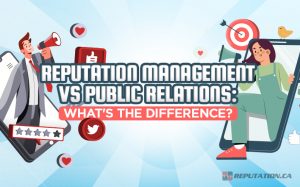Responding to positive reviews is crucial, but how should you do it? Look no further. This article offers practical steps on how to respond to positive reviews, crafting authentic replies that foster brand loyalty and promote your business. Expect no-nonsense advice, response examples, and templates that will help you to acknowledge your customers meaningfully and strategically.
Key Takeaways
- Crafting personalized, prompt responses to positive reviews bolsters customer loyalty, enhances brand image, and builds consumer trust, driving business growth and retention.
- Expressing sincere gratitude, acknowledging specific details from positive reviews, and encouraging further customer engagement reflects a strong customer-brand relationship and can lead to repeat business.
- Utilizing positive reviews across digital platforms, including social media and your website, amplifies your brand’s credibility and visibility while influencing consumer behavior and purchasing decisions.
Why You Have to Acknowledge Positive Reviews

Positive reviews are precious assets in online business. They bolster customer loyalty, enhance brand image, and foster trust. Active engagement with customers and acknowledging their opinions can build a bond and appreciation. Such actions strengthen customer relationships and encourage loyalty and advocacy, leading to increased ratings and trust. By observing positive review examples, businesses can learn how to better connect with their audience and improve their overall customer experience.
Furthermore, acknowledging positive reviews can uplift your brand’s reputation significantly. Such actions inspire trust and reliability in consumers, facilitating sales and attracting new customers. Demonstrating attention to their valuable feedback promotes positive interactions and strengthens the customer-brand relationship. So, how can we make the most out of these golden nuggets? It’s all about personalization and understanding the impact on your brand image.
Boosting Customer Loyalty with Personalized Responses
Personalization plays a pivotal role in building robust customer loyalty. Tailoring responses to positive reviews can stimulate repeat engagement, make customers feel esteemed, and enrich the overall customer experience. Such customization can mitigate customer churn and result in superior customer retention rates.
How can this be accomplished? Utilizing technology and data analytics to customize the customer experience can propel business performance and revenue growth, resulting in enhanced customer outcomes and an influx of positive reviews. It allows you to show genuine appreciation to your customers, ultimately leading to a more positive and impactful customer experience.
Impact on Brand Image and Trust
Acknowledging positive reviews has several benefits for your brand:
- Bolsters customer loyalty
- Noticeably impacts your brand’s image
- Builds trust, which is crucial for retaining loyal customers and constructing a positive reputation
- Significantly influences both customer acquisition and retention
Acknowledging and responding to positive reviews demonstrate your appreciation for customers, show that you take their feedback seriously, and highlight your commitment to delivering exceptional experiences. This engagement leads to increased trust and confidence in the brand, which can encourage customers to prefer your brand’s products or services over competitors.
Crafting the Perfect Response to a Positive Review

Now that you have recognized why we need to acknowledge positive reviews and their value, we will tackle how to write a thoughtful and effective response. A well-crafted reply encompasses more than a mere ‘Thank You’. It embodies sincere gratitude, acknowledges specific details from the review, and urges continued engagement.
Note that an authentic and respectful reply necessitates promptness to exhibit value for the customer’s opinion, brevity, and genuineness in expressing gratitude and acknowledgment of the positive review. But how do we express sincere gratitude? How do we underline the specifics mentioned in the review? Let’s dive deeper into these aspects.
Express Sincere Gratitude and Appreciation
Conveying heartfelt gratitude can imprint a lasting memory on the customer. This not only enhances their social, emotional, and psychological well-being but also forges a profound human connection. Such expressions of gratitude in review responses can elevate perceptions of trustworthiness and fortify the customer-brand relationship.
It’s not just about saying ‘Thank You’. It’s about crafting a heartfelt appreciation note, expressing genuine thanks for their time and effort in writing the review, and showing appreciation for their kind words and honesty. Personalizing the response shows that you value and appreciate them personally, leading to stronger relationships, positive customer experiences, and increased brand loyalty.
Highlight the Specifics Mentioned in the Review

Highlighting the specifics mentioned in the review is a vital component of an exemplary response. It mirrors your in-depth understanding of the review and displays your attention and gratitude towards the customer’s feedback. This approach showcases your business’s commitment to valuing customer input and attentiveness to their individual experiences or concerns. By examining review response examples, you can learn how to craft the perfect reply to your customers’ feedback.
Moreover, by highlighting specifics in a review response, you show customers that their feedback is valued and acknowledged. It’s a great way to emphasize the positive aspects and qualities praised by the customer, ultimately enhancing customer engagement.
Encourage Continued Engagement and Repeat Business
Replying to a positive review presents a golden opportunity to stimulate ongoing engagement and advocate for repeat business. By crafting a positive review response promptly and subtly hinting in your language that you would appreciate their return visits or trials of new products or services, you encourage continued engagement. To better understand this approach, consider examining a positive review response example. Additionally, learning from positive reviews responding techniques can further enhance your customer relations.
Consistently responding to customer reviews can lead to improved ratings, increased customer trust, and a stimulated reviewing activity. Ensuring customer engagement continues can prevent disengagement, lost opportunities for improvement, and potential reputation damage. Conversely, ignoring reviews could result in lost trust and potential customers.
The Art of Addressing Negative Feedback within Positive Reviews
While positive reviews are a boon for businesses, sometimes they come with a sprinkle of criticism. Negative feedback within negative reviews can be tricky to handle, but they provide unique opportunities to showcase your commitment to customer satisfaction and continuous improvement.
Acknowledging the criticism, empathizing with the customer, offering an apology and solution, and requesting additional customer’s feedback and suggestions can morph negative feedback into an impactful tool for business growth.
To effectively handle negative feedback, follow these steps:
- Acknowledge the criticism
- Empathize with the customer
- Offer an apology and solution
- Request additional feedback and suggestions
Embrace feedback with an open mind and use it to craft a proactive plan for improvement.
Templates for Stellar Positive Review Responses

The art of responding to reviews can be mastered with the help of some well-crafted positive review response templates. These templates for positive review responses can serve as a guide, enabling you to effectively convey gratitude, address concerns, and encourage further engagement.
Remember, each review is unique and requires a personalized response. These templates are just a starting point. They should be adapted to fit the specifics of each review and reflect your brand’s voice and personality. Let’s delve into some specific templates that can be used for different scenarios.
Template for Responding to 5-Star Reviews
When you receive a 5-star review, it’s a clear sign that you are doing something right. Expressing gratitude and acknowledging the specifics of the review are key. A well-crafted response here can solidify the positive experience for the reviewer and leave a lasting impression.
One way to respond could be: ‘Thank you so much, [Customer’s Name], for your wonderful review! We’re thrilled to hear that you had a great experience with us and particularly enjoyed [specific aspect they mentioned]. We are excited to have the opportunity to serve you again soon. Thank you for choosing our services. This response expresses gratitude, addresses the specifics mentioned in the review, and invites the customer to return, ticking all the right boxes.
Template for Handling Mixed Feedback in a Positive Review
Responding to a positive review with some criticism requires tact and empathy. It’s essential to acknowledge the positive aspects, express gratitude, and address the concerns raised in a constructive manner.
Thank you for sharing your feedback, [Customer’s Name]. We appreciate your time. We’re glad to hear you enjoyed [positive aspect], but we’re sorry to hear about [negative aspect]. We take your comments seriously and will strive to improve. I hope we can serve you again in the future. We look forward to the opportunity. This response not only acknowledges the positive aspects but also addresses the criticism, showing the business’s commitment to improvement.
Integrating Positive Reviews Across Your Digital Presence

Beyond replying to reviews, it’s essential to utilize them across your digital platforms. Featuring positive reviews on your social media platforms and your website can boost your business’s online presence and enhance performance.
By sharing positive reviews on social media, featuring testimonials on your website, and integrating reviews into your overall digital marketing strategy, you can maximize the impact of positive feedback and connect with your audience in a more engaging and authentic way.
Sharing positive reviews on social media can increase brand visibility and credibility. Social media platforms like Facebook, Twitter, and Instagram provide an excellent opportunity to share positive customer experiences and highlight the quality of your products or services.
You can share reviews as stand-alone posts or incorporate them into your regular content, such as weekly round-ups or customer appreciation posts. Remember to ask for your customers’ permission before sharing their reviews and always respect their privacy.
Featuring Testimonials on Your Website
Featuring customer testimonials on your website can significantly enhance trust in your brand. Testimonials serve as social proof, assuring potential customers that others have had positive experiences with your business.
To feature testimonials effectively, consider:
- Adding customers’ headshots
- Linking to their websites if applicable
- Diversifying content types
- Strategically placing testimonials on key pages
This can significantly improve your website’s ranking for relevant search terms, especially beneficial for local companies.
In today’s digital age, comprehending the dynamics of online reviews is pivotal. Positive online reviews can substantially shape a business’s online reputation and success. Grasping the significance of positive feedback and the far-reaching impact of responding to reviews is crucial.
Positive online reviews play a crucial role in shaping consumer behavior by:
- Influencing shopping choices
- Increasing awareness and interest
- Building trust and credibility
- Making consumers more likely to choose a business
In the age of digital word-of-mouth, a positive review can travel far and wide, significantly influencing your brand’s reputation.
Understanding the Weight of Positive Feedback Online
Positive feedback online carries significant weight. It can elevate your brand’s reputation, attract new customers, and foster trust,. Positive online feedback is crucial for attracting new clients as it serves as social proof, assuring prospective customers that others have had a positive experience with the business.
To maximize the impact of positive reviews, it’s essential to:
- Maintain profiles across all platforms
- Track and showcase reviews consistently
- Utilize these reviews to enhance your online presence and drive business performance.
The Ripple Effect of Responding to Reviews
Responding to reviews has a ripple effect. Each response can impact your business’s online reputation and success, influencing its reputation, industry standing, and ability to stand out in the marketplace.
Valuing customer feedback and addressing issues swiftly can enrich brand loyalty and motivate others to share their positive experiences through reviews. Regularly responding to customer reviews can result in enhanced ratings, boosted customer trust, and invigorated review activity.
Summary
In conclusion, positive reviews can significantly impact your business. They boost customer loyalty, enhance your brand’s reputation, and attract new customers. Responding to reviews, especially positive ones, with gratitude can forge stronger customer relationships and showcase your commitment to customer satisfaction. Remember, every review is an opportunity to connect with your customers, show them that their opinion matters, and improve your products or services based on their feedback. So, don’t shy away from reviews, embrace them, and watch your business grow.
Frequently Asked Questions
How do you respond to a positive review example?
When you receive a positive review, it’s a good idea to respond with a personalized message to show your appreciation and strengthen your connection with the reviewer. Always tailor your response to the specific feedback you received and make sure to thank the reviewer for their kind words.
How do you professionally respond to a review?
When responding to a review, it’s important to provide a polite and professional tone. Additionally, address any specific concerns raised by the reviewer to show that you value their feedback. Good luck with your response!
How do you respond to a positive employee review?
Respond to a positive employee review by expressing gratitude and highlighting how the feedback motivates you to keep contributing and improving. This kind of recognition encourages me to continue making a positive impact.
How can positive reviews enhance my brand’s reputation?
Positive reviews can elevate your brand’s reputation, attract new customers, and foster trust. This can ultimately lead to increased sales and business growth.
How should I handle negative feedback within positive reviews?
Acknowledge and address the negative feedback within positive reviews constructively to use it as an opportunity for improvement. Embrace feedback to enhance the overall experience.











